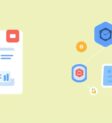
AI agents for data scraping are rapidly changing how organizations extract, process, and leverage web data. This article explores the evolution from traditional scraping methods to advanced, intelligent agents empowered by machine learning, natural language processing, and automation. We’ll also examine practical setup guidance, best practices for compliance, real-world applications, troubleshooting tips, and a look ahead at the future of AI-driven data extraction.
The Evolution of Data Scraping: From Manual Methods to AI Agents
Data scraping, once highly manual and labor-intensive, has historically required analysts and developers to write scripts and perform repetitive collection tasks. Scraping was further complicated by frequent changes in website structures, anti-bot technologies, and the daunting scale of online information. As web technologies matured, so did scraping tools, evolving from basic extraction scripts to advanced frameworks that could navigate dynamic web environments and handle large data volumes.
The turning point emerged with AI agents for data scraping. Unlike their predecessors, AI agents automate the extraction process, adapting in real time to varying website structures and layouts. These intelligent systems leverage machine learning to interpret changes, identify semi-structured information, and even mimic human browsing behaviors—significantly reducing the risk of detection. This transformative leap empowers organizations to unlock insights at incredible speed and accuracy, fueling everything from market research to strategic intelligence in ways previously unattainable. For those looking to integrate advanced agents, platforms like TheAgentBot offer helpful beginner resources.
Key Technologies Behind AI Agents for Data Scraping
AI agents represent a fundamental shift from the rigid workflows of traditional scrapers. Rather than relying on fixed, rule-based extraction logic, AI-powered agents employ advanced machine learning and natural language processing (NLP) to dynamically interpret complex, shifting web content.
Some of the core technologies driving the rise of AI agents for data scraping include:
- Supervised Learning Models: Algorithms like decision trees and neural networks are trained to detect and extract specific types of information, even as website layouts shift over time.
- Natural Language Processing (NLP): NLP techniques enable agents to understand unstructured or semi-structured text, making it possible to target meaningful data on unpredictable, content-rich pages.
- Reinforcement Learning: These systems refine their scraping strategies through trial and error, learning from past attempts to maximize data yield and minimize detection risk.
By combining these machine learning capabilities, AI agents dynamically adapt to structural changes and resist common anti-scraping roadblocks. They can also mimic realistic browsing—switching user agents, randomizing behaviors, and adjusting request rates—allowing organizations to collect diverse, large-scale datasets with far greater reliability and efficiency. If you wish to explore advanced custom agent setups, this guide offers step-by-step insights.
Setting Up Your First AI Agent for Data Scraping
Launching your first AI agent for data scraping is more accessible than ever thanks to modern, user-friendly tools. The essential steps include:
- Choose the Right Platform: Evaluate tools such as OpenAI Agents, LangChain, or hybrid browser automation with AI integrations (e.g., Selenium + GPT). Consider your targets—are you scraping websites, databases, or various document formats? Check for community support and scalability.
- Install Necessary Software: Most Python-based agents are set up with straightforward pip commands. Remember to install dependencies like BeautifulSoup (for web parsing) or API libraries relevant to your data sources.
- Configure the Agent: Input target URLs or data structures, specify the fields or formats you wish to extract, and set up scheduling for recurring tasks. Many platforms offer templates and examples to accelerate configuration.
- Test and Deploy: Run tests on small data samples to validate accuracy and reliability. Monitor logs for errors and refine your parsing or extraction logic as necessary. Once confident, deploy the agent locally or via the cloud for ongoing automation.
- Stay Compliant: Always review site terms of service and
robots.txtrules to ensure your activities respect legal and ethical boundaries.
These steps allow even non-experts to harness the capabilities of AI agents for scalable, targeted data extraction. For those seeking a comprehensive guide, check out the Beginner’s Guide to TheAgentBot.
Best Practices and Ethical Guidelines for Data Scraping with AI Agents
Responsibility is paramount when deploying AI agents for data scraping. Adherence to best practices and ethical standards shields you from legal complications and protects the broader digital landscape:
- Respect Site Policies: Always read and follow website terms of service and robots.txt directives. Ignoring these rules can result in bans or legal action.
- Comply with Regulations: With laws like GDPR and CCPA, restricting the scraping of personal or sensitive data is essential. Target only public data and anonymize information whenever possible.
- Minimize Server Load: Use “polite” scraping techniques—introduce delays between requests, identify your agent in user-agent headers, and implement exponential backoff strategies if rate-limited.
- Use Data Responsibly: Do not scrape or redistribute copyrighted or proprietary materials. Credit your sources appropriately, and never misrepresent scraped data as your own creation.
Employing these best practices ensures both the sustainability and reputation of your data projects and contributes to a healthier data ecosystem.
Real-World Applications of AI Agents for Data Scraping
AI agents for data scraping are revolutionizing numerous industries by providing actionable intelligence and automation. Some of the most impactful applications include:
- E-commerce: AI-driven agents analyze customer behavior, personalize recommendations, and synchronize inventory, resulting in optimized merchandising and higher conversions.
- Academic Research: Intelligent scrapers mine academic papers, conduct literature reviews, and even generate hypotheses, accelerating research cycles and deepening analysis.
- Competitive Intelligence: AI agents survey markets, monitor competitors, and collect real-time insights across thousands of digital sources, empowering organizations to make swift, informed strategic decisions.
For more inspiration on practical uses of agent automation, see the article on Best Use Cases for TheAgentBot in 2025.
Overcoming Common Challenges in AI-Powered Data Scraping
While AI agents for data scraping are highly adaptable, they aren’t immune to obstacles. Here’s how to tackle the most frequent issues:
- CAPTCHAs: Address with scraper-friendly APIs that solve CAPTCHAs or use headless browsers (Puppeteer, Selenium) to simulate human interactions. If official APIs are available, they’re often the most compliant and reliable data sources.
- Anti-Bot Mechanisms: Combat IP blocking and rate limiting by rotating proxies, randomizing user agents, and pacing requests to mimic real users.
- Dynamic Content: Render JavaScript-rich pages using headless browsers or inspect network traffic to find underlying API endpoints for more direct data access.
Troubleshooting Tips:
- Update scrapers regularly to match evolving site structures.
- Monitor for spikes in HTTP 429 or 403 errors—these indicate anti-bot defenses.
- Integrate comprehensive logging for easier debugging and graceful error handling.
- Always revisit legal and ethical requirements before initiating new scraping projects.
A resilient AI scraping workflow couples smart technology choices with ongoing monitoring and compliance awareness.
The Future of AI-Driven Data Scraping
The next generation of AI agents for data scraping is being shaped by rapid advances in technology, regulation, and digital ethics. Notable trends on the horizon include:
- Advanced NLP Integration: Sophisticated language models will unlock insights from unstructured and context-rich sources, including forums, reviews, and multimedia transcripts.
- Adaptive, Human-Like Browsing: Agents powered by real-time reinforcement learning will seamlessly evade detection by mimicking natural browsing behaviors and adapting strategies on the fly.
- Edge Computing and Federated Learning: Decentralized processing will speed up scraping, reduce bandwidth costs, and enhance privacy by training models directly where the data resides.
- Interoperable, Automated Data Cleaning: AI agents will increasingly recognize diverse data formats and autonomously clean data, vastly improving efficiency and post-processing outcomes.
- Data Authenticity & Validation: Expect integration of digital watermarking and blockchain to validate the provenance of scraped data for trustworthy, high-value insights.
As these trends converge, AI-driven data scraping will become smarter, faster, more compliant, and capable of uncovering value from a continually expanding world of digital information.






